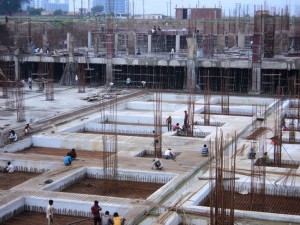 Infrastructure is often used as an economic development tool, whether in developing or more established countries throughout the world. Even the U.S. recently considered establishing a national infrastructure bank tocreate jobs and to restore its weakened economy. The purpose of promoting infrastructure is that if certain projects received adequate startup capital, they would be able to fund themselves over time – thereby initiating economic activity. Though a widespread effort to invest in this nation’s physical improvements will likely not happen in the near future, thanks to China, Latin America may be able to tell a different story.
Infrastructure is often used as an economic development tool, whether in developing or more established countries throughout the world. Even the U.S. recently considered establishing a national infrastructure bank tocreate jobs and to restore its weakened economy. The purpose of promoting infrastructure is that if certain projects received adequate startup capital, they would be able to fund themselves over time – thereby initiating economic activity. Though a widespread effort to invest in this nation’s physical improvements will likely not happen in the near future, thanks to China, Latin America may be able to tell a different story.
While China is not a new actor in the region, it is certainly a growing one. Recently, China announced that it is dedicating a $10 billion line-of-credit for infrastructure projects in Latin America. The goal is to help strengthen the economies of these developing nations. China has already invested $7 billion for port, railway and aviation infrastructure in Brazil. Venezuela received a $4 billion Chinese loan for an electrical grid and other infrastructure that will be paid back in oil. Caribbean countries have also received their share of stadiums, hospitals and schools from China.
It is no secret that Latin America is in need of these types of investments. At the same time, infrastructure for the purposes of growth alone is not enough. When it comes to developing countries, the economic activity that infrastructure is credited with spurring is typically discussed solely in terms of its benefit to the nation as a whole. Little to no consideration is given to the people whose communities are most directly impacted by the scale of these projects. There has to be a clear and dedicated commitment to improving the localities themselves.
One example is the infrastructure bank proposal for the U.S. Projections showed that for every $1 billion federal dollars spent on highway construction, almost 30,000 local jobs would be created for countless unemployed citizens. A similar outcome is not readily apparent with most infrastructure investments in Latin America. Case in point: previous Chinese-sponsored projects required that at least 50% of project materials and services come from China. Additionally, almost all of the minimum wage workers also came from China.
Clearly there are countless under-employed individuals throughout Latin America who would have benefited from participation in these infrastructure projects. Beyond this, an understanding of how infrastructure decisions are made is not always readily apparent leaving local stakeholders frustrated and demoralized. Infrastructure investments can and should happen in the context of a long-term vision for the surrounding communities and not simply as isolated, one-off projects.
Ultimately, China’s infrastructure line-of-credit is a welcomed initiative that has the potential to revitalize Latin American economies and as a result, enhance communities. It is important, however, that concerted efforts are taken to ensure that local communities are actively involved before, during and even after projects are undertaken. Economic growth and improvements to the built environment should not be seen as competing objectives with social development and community building. Where possible, local people should also be provided with economic opportunities as these investments are being made. Infrastructure is able to fundamentally revitalize developing places and economies only when strategic community planning is a significant part of the process.
As originally featured in the Urban Times.


About The Author: Vanessa L.
More posts by Vanessa L.